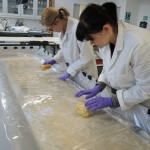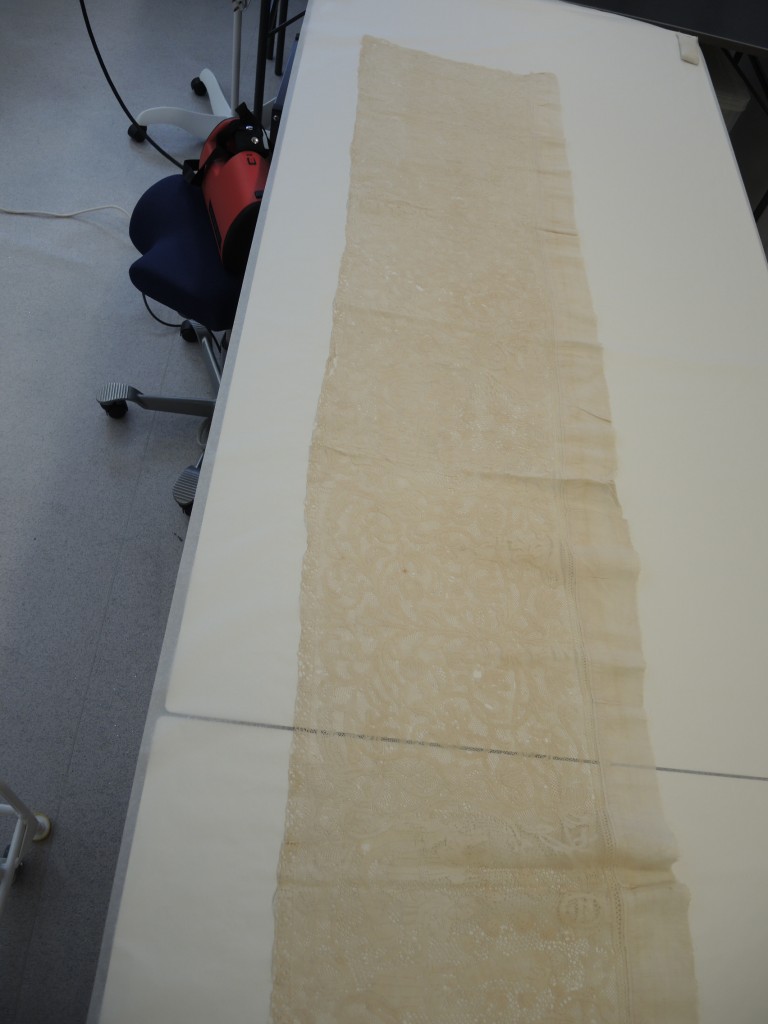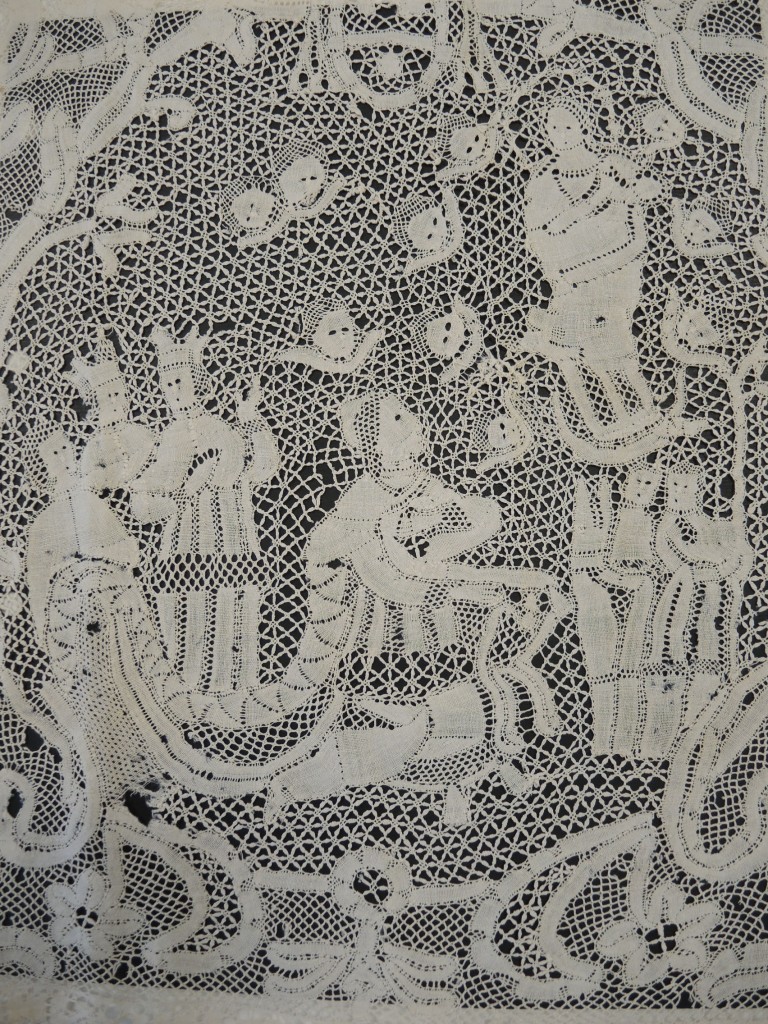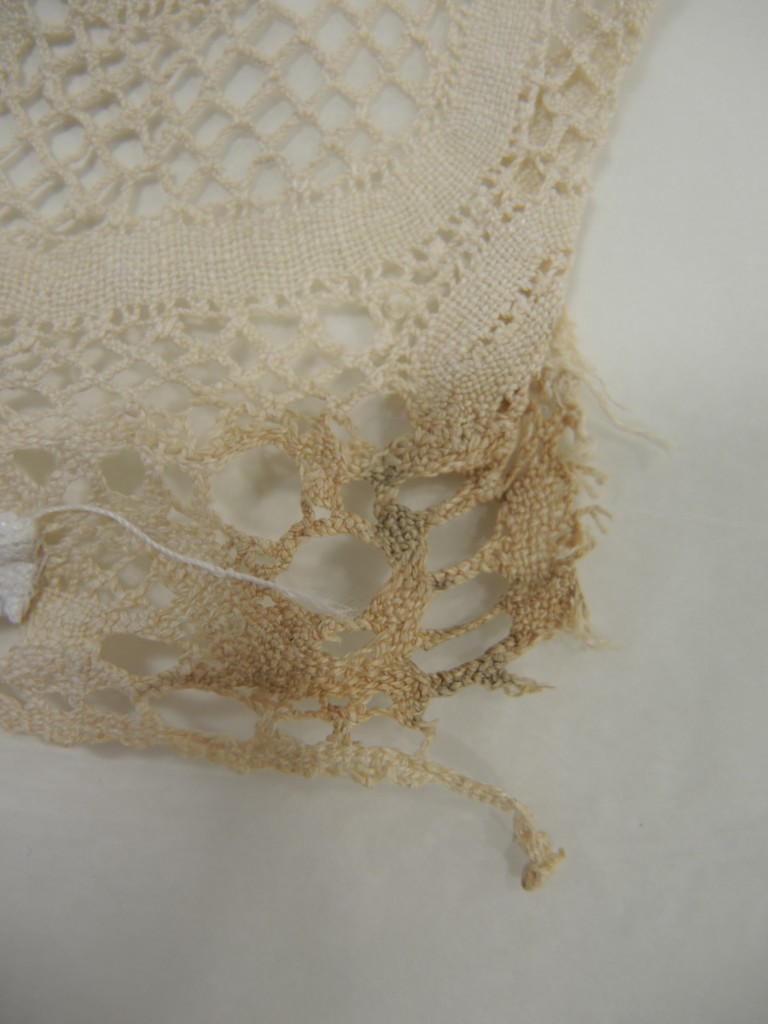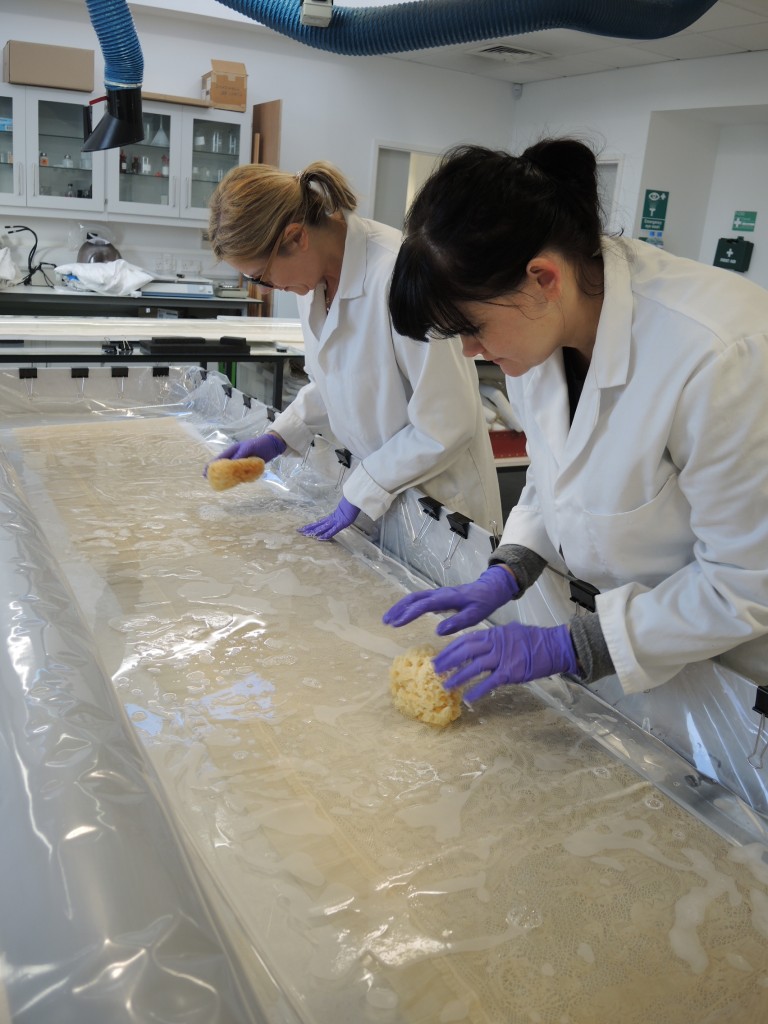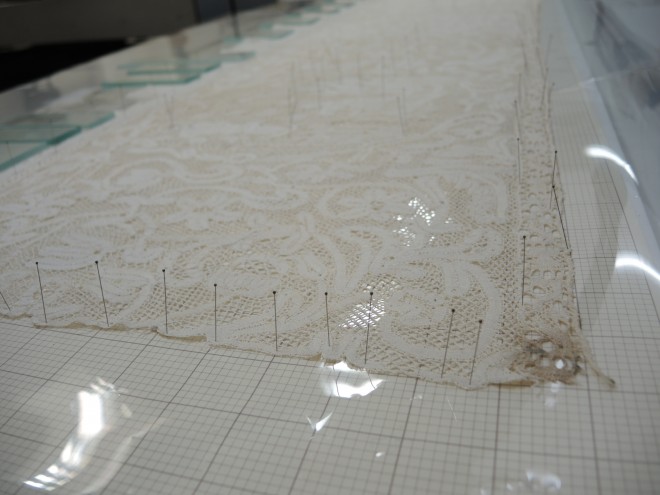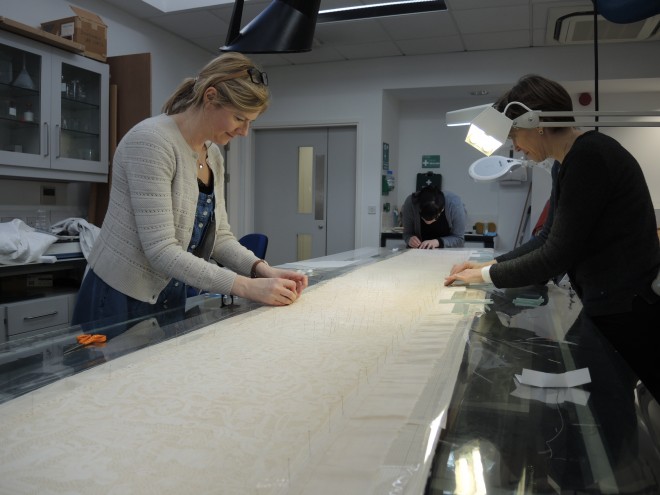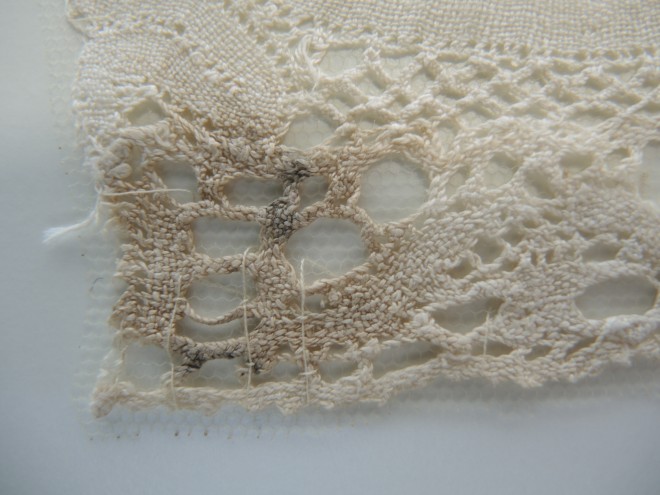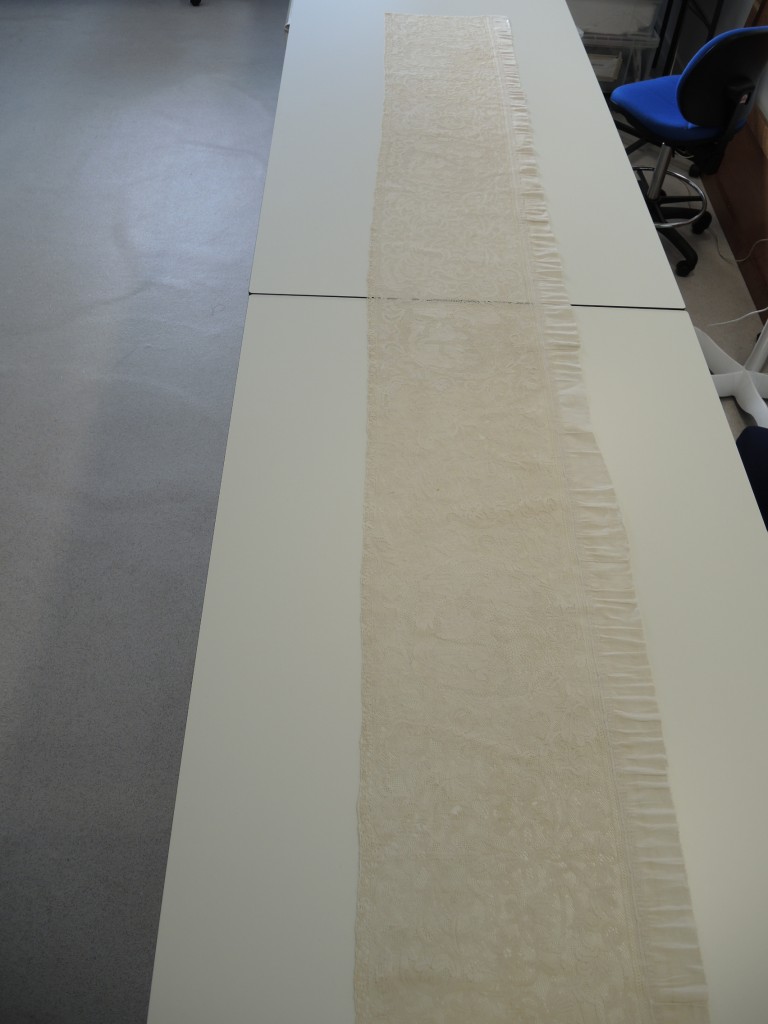From time to time, textile conservators clean historic textiles using water and detergent. The decision to do this takes time and rigorous testing to ensure there are no adverse effects when exposing a textile to water and a detergent.
Two historic textile objects were recently wet cleaned in the Paper & Textile Conservation studio. The objects are similar in that they are both white with no dyes or coloured embellishments. However one is a 3.5 metre-long lace border for an Alb (a white vestment reaching to the feet, worn by Christian clergy), the other a three-dimensional embroidered man’s doublet, posing different considerations and methods for wet cleaning.
These are images of the Alb border before wet cleaning. Notice the overall yellow discolouring of the lace which can be found on old cellulose (plant-based) fibres. Also note the creasing and fold lines throughout on the top image – wet cleaning can help to soften these lines and flatten the textile. The bottom image is a detail of some of the imagery within the lace border.
The challenge with the Alb was its size, needing two conservators to work together on the treatment and handling. There were similarities to the embroidered man’s doublet (which we mention in our next blog post) in terms of the degradation products and yellowing of the fibres.
This is a detail image of the lower corner of the lace border before wet cleaning and conservation. The area had become discoloured, now brown and grey in colour. It had also become weak and damaged, which is a reason to try to reduce soiling and discolouration.
We gently sponged the lace border to activate the detergent. The soiled water was then replaced with clean water several times for rinsing until there was no detergent left within the object’s fibres.
Once out of the wash bath, the wet lace border was pinned to a soft board to allow it to dry straight and flat. As the textile is fine and lightweight, it dried relatively quickly with the use of fans.
This is the lower corner after wet cleaning and support stitching. As you can see the discolouration still remains, however it is much reduced.
This is the full Alb border after wet cleaning. It is considerably brighter and lighter in colour, and the creases and folds have flattened nicely. Look out for it in our new Art of Living gallery, opening summer 2016.
